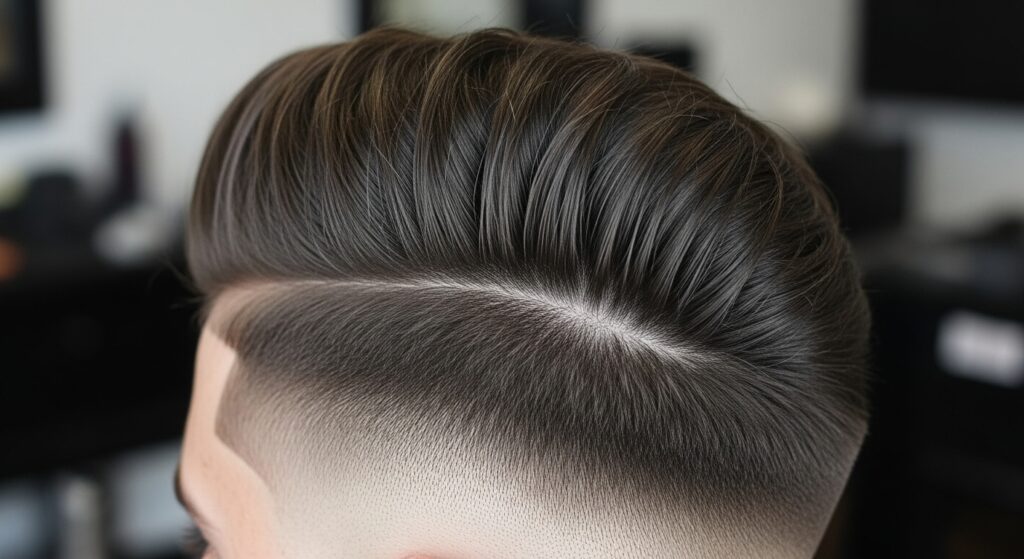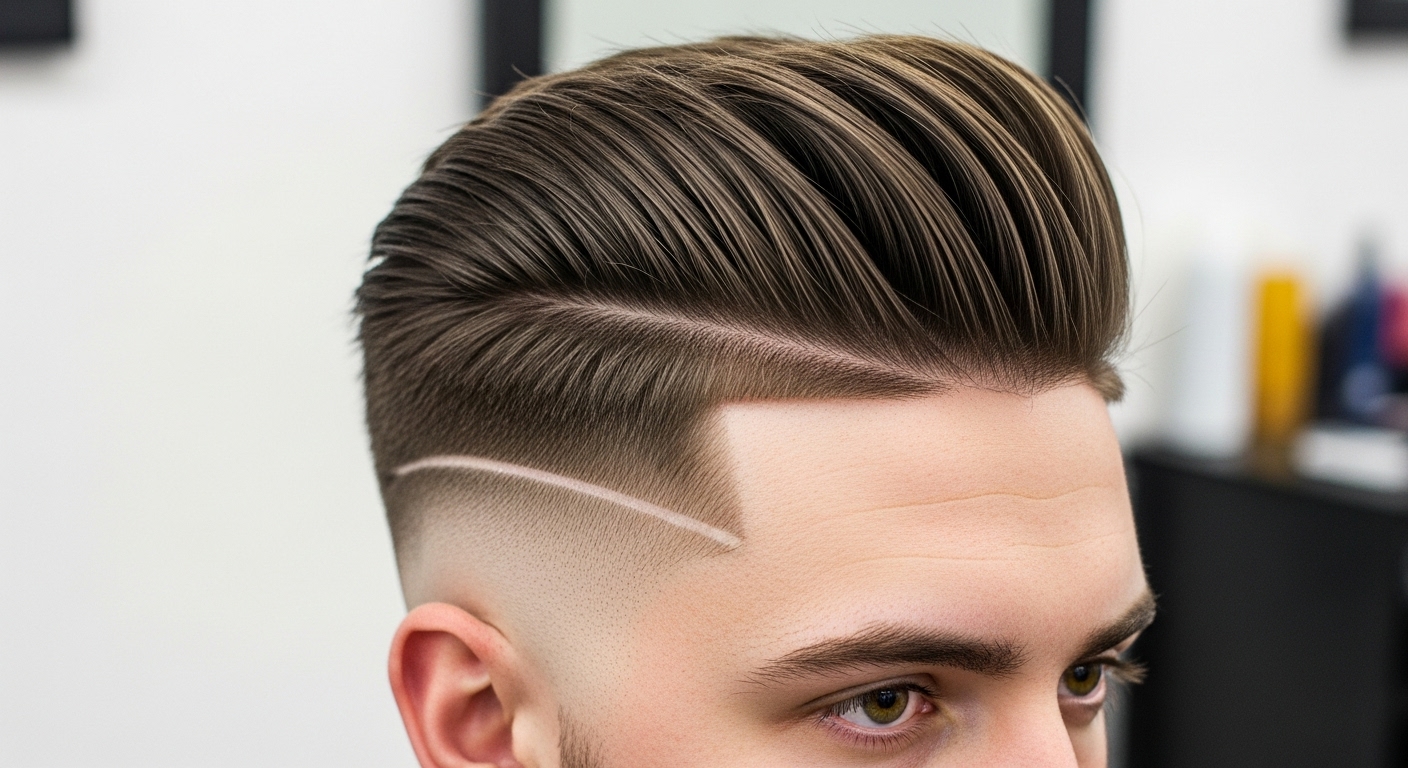Alright—so let’s talk about this style that keeps popping up in the shop lately. The blowout taper. Yeah, that one. You’ve probably seen it without even knowing the name. Maybe on a dude walking by who just looked… clean. Hair standing up a what is a blowout taper little, sides faded out soft. Not too sharp. Not too messy. Somewhere right in that sweet middle.
Been cutting hair over a decade now. And let me tell you—this one’s not just a trend. It’s been around. It’s just finally getting some respect outside Jersey and NYC where it started hitting heavy.
So, What’s a Blowout Taper?
Let’s not overcomplicate it. A blowout taper is basically where you fade the hair down around the neck and ears—but not too high. Keep the top voluminous, maybe even styled up with some heat. The “blowout” part comes from that lifted look—like the hair got hit with a round brush and a dryer, got some movement to it. The taper just means the fade stays low and clean.
It’s not a skin fade. It’s not a burst fade. It’s not meant to look military or super tight. Think: urban, chill, versatile. Like, you can wear this to a wedding or to hoop at the park. It doesn’t scream anything, but it speaks well.
Some barbers will call it a Brooklyn Blowout, or even a Temple Fade. You’ll hear both depending on where you’re standing. But they’re cousins. Some overlap, some differences. Ask five barbers, you’ll get seven answers.
Why People Are Asking For It
Straight up—it’s flexible. Doesn’t matter if you’ve got curly hair, thick waves, straight hair with some fluff. It works. I’ve done it on Black hair, Hispanic clients, even some Asian kids wanting that K-pop lift without going all skin fade.
And it fits those who want to look fresh without looking like they tried too hard. That’s rare. Most cuts either shout “barbershop fresh” or “haven’t cut it in weeks.” Blowout taper sits right in the pocket.
It also grows out real smooth. Doesn’t turn into a mess in four days. You get a nice soft grow-back. Not harsh lines. And that top? You can style it any way you want—pompadour, messy fringe, sponge curls, whatever.

Key Features of a Blowout Taper
Let’s break it down for those that want the technical bits:
- Taper around the temple and neck – stays low, not too aggressive
- Volume on top – usually styled up or out, sometimes textured
- Clean neckline – not boxed unless you ask, just natural with a slight shape
- Blend – smooth transition from skin to top, nothing blocky
- No harsh line-up mandatory – optional, but a soft finish works better here
Honestly, it walks that fine line between being neat and effortless. You know that dude who looks like he just woke up handsome? That’s the energy this cut gives off when it’s done right.
Common Variations People Get
Everybody wants to put their own spin on it. And that’s cool. That’s the beauty of barbering—it’s personal. You might see:
- Blowout Taper with Design – throw in a side part or a razor line
- Curly Blowout – keep the curls on top fluffy, fade the sides
- Blowout Afro Taper – natural hair, minimal top shaping, tight temple fade
- Blowout Mullet – yeah, it’s a thing now… extra length in the back, still clean on the sides
So, when a client asks what is a blowout taper, I usually ask them what they think it is first. Then show them a few versions on my phone. Everyone sees something different, and that’s okay. It’s a loose blueprint, not a fixed rulebook.
Who Should Avoid It?
Okay, let’s keep it real. Not every head shape plays nice with every style. If you’ve got super fine hair on top and not much density, might not hold the lift unless you commit to styling it daily. No shame, just something to consider.
Also, if you hate using product or heat, or you don’t like any maintenance at all, this might frustrate you. That top needs something. Either a little mousse, a curl sponge, or a blow-dry lift—depends on your texture.
How to Ask Your Barber for It
Don’t just walk in and say, “Blowout.” Could mean too many things. Say you want:
- A taper on the neck and temple
- Leave volume on top
- Blend it naturally—no harsh line unless you want it
- Neckline natural or shaped depending on preference
And bring a pic. Always helps. Even if it’s someone who doesn’t look like you—it helps guide the vibe.
Quick Note on Maintenance
This cut’s easy but not zero-maintenance. I tell most folks to come back every 2–3 weeks to keep the taper sharp. The top, you can leave longer. Just keep it washed, maybe use a blow dryer with a diffuser if you’ve got curls. And use something light—don’t cake it with heavy waxes unless you like that stiff look.
Alright, I could go on, but you get the point. The blowout taper is one of those cuts that kind of sneaks up on you. You try it once, then suddenly, it’s your thing. It’s chill, smooth, and fits just about anywhere you walk.
Anyway. If you’ve been thinking about switching it up but don’t want to go full fade or full grown-out—this is the move. No need to overthink it. Just sit in the chair and let it happen.
Let it taper off.
FAQs (Real Talk Style)
- Does a blowout taper work on straight hair?
Yeah, it does. You’ll just need more help from a blow dryer or product to get that volume on top. - How’s it different from a burst fade?
Burst fade curves around the ear and usually goes higher. Blowout taper stays low and focuses more on that airy lift up top. - Can I get a blowout taper if I have a receding hairline?
Depends. If you still have some density on top, we can work with it. Might have to adjust the styling a bit, though. - Do I need to use a blow dryer every time?
Not always, but it helps. Even just a quick blast adds that fluff and separation. - How long does a blowout taper last before it looks messy?
About 2–3 weeks before the taper softens. But it grows out clean, not all jagged like some high fades.
Ask ChatGPT

